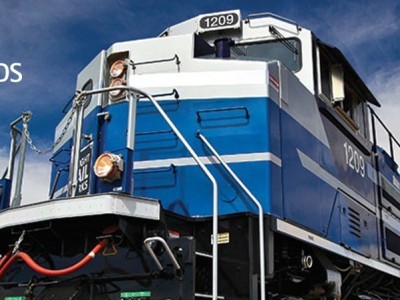IHS Markit Analysis and Commentary: Global commercial vehicle demand forecast to fall further in 2021; direction will vary by equipment type and by region
Dec 23, 2020After enduring a projected 10.6% drop in demand for new commercial vehicles during the 2020 pandemic year, the global market for new trucks and buses above 6 tons gross vehicle weight (US Classes 4-8 equivalent) may see a further decline of greater than 9% in 2021, forecaster IHS Markit concludes. This would bring demand down to 2.9 million new vehicles, from a forecast 3.2 million in 2020, to reach the lowest level globally since 2016. The key driver behind these numbers is expected weakness in the world's heavy-truck segment (US Class 8 equivalent), representing about two thirds of the world's commercial-vehicle demand above 6 tons GVW. This segment is expected to lose momentum as mainland China's market normalizes from the blistering selling rates of mid-2020 and gains in heavy-duty demand elsewhere will be too small to offset the anticipated slippage in mainland China. Meanwhile, worldwide demand for buses and medium trucks is expected to rise in 2021, in nearly every major region, as demand for transportation services strengthens and the pandemic begins to ebb. The global increases in demand for medium trucks and buses in 2021 are estimated to be 9% y/y and 19% y/y, respectively.
Apart from the uncertain course of the pandemic itself, mainland China offers some of the greatest risks and opportunities around the baseline forecast on a global scale. Mainland China alone is forecast to experience a 37% y/y decrease in demand for new heavy-duty trucks during 2021, after seemingly bucking the trend in 2020 and notching up a projected 21% y/y increase in sales this year, largely thanks to government stimulus. By contrast, all other regions together have experienced a 2020 plunge and are likely to realize heavy-duty demand increases in 2021, of around 14% y/y.
Cautious assumptions about remaining stimulus opportunities underpin the bearish view of 2021 for mainland China. The government applied a variety of direct and indirect temporary measures to increase 2020 truck demand. "Although the [mainland China] government stimulus and environmental protection-related…policy are much stronger than expected in the third quarter [of 2020], IHS Markit still keeps the view that the policy effect in stimulating truck sales will become much weaker in the fourth quarter and the currently high vehicle population may become a negative factor to curb truck demand," IHS Markit explains in its recently published edition of the Medium and Heavy Commercial Vehicle Industry Forecast Report. In short, the sector's vehicle population is large and relatively young, with stimulus measures centered on vehicle age and technology having already forced out of use many pre-2015 trucks meeting the NSIII diesel emission standard. All else equal, these circumstances will act as a brake on continuing the same policies that have boosted new demand in mainland China until now.
Compared to 2019, the forecast for 2021 recoveries in the individual regions fall short of previous levels. Notwithstanding good credit availability, solid trucking-industry profitability in some markets, and strong business confidence in many countries, at least four related factors will prevent a complete recovery in the near term, including the ongoing course of the pandemic; the expected protracted recovery in demand for land transportation services and warehousing; the expected gradual pace of rebound in spending on capital goods (investment); and still high unemployment. Individually, Europe may also experience headwinds in the form of the United Kingdom's departure from the European Union, as the Brexit transition has still not been resolved. From a MCHV perspective, IHS Markit expects multiple regions being recovered to pre-pandemic levels only from 2023 onwards.
By Andrej Divis, Director - Global Truck Research, IHS Markit
Similar Stories
ZM Trucks announces new manufacturing plant and HQ in Fontana, CA
ZM Trucks, North America’s newest zero-emissions commercial truck brand, proudly announces the establishment of its first North American manufacturing plant in Fontana, California. This significant milestone also marks the relocation…
View Article
AAR reports rail traffic for the week ending January 18, 2025
View ArticleUSDOT appoints WSP’s Nate Bryer to Advisory Board considering road usage charging
The U.S. Department of Transportation appointed Nate Bryer, WSP senior vice president and road usage charging (RUC) business lead, to its new Federal System Funding Alternative (FSFA) Advisory Board, a…
View Article
Norfolk Southern reports more than $4.3B in industrial development activity in 2024
View Article
AAR applauds Patrick Fuchs STB Chairman designation
View Article
AAR Statement on the Inauguration of Donald J. Trump
View ArticleGet the most up-to-date trending news!
SubscribeIndustry updates and weekly newsletter direct to your inbox!





